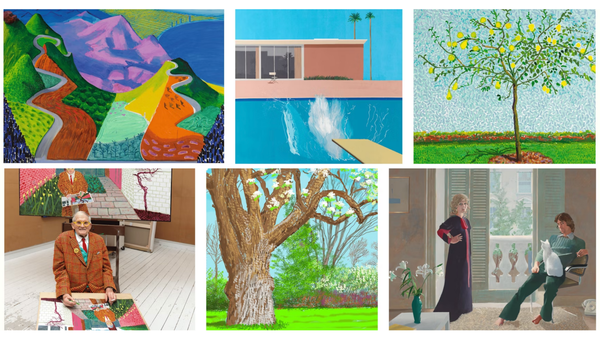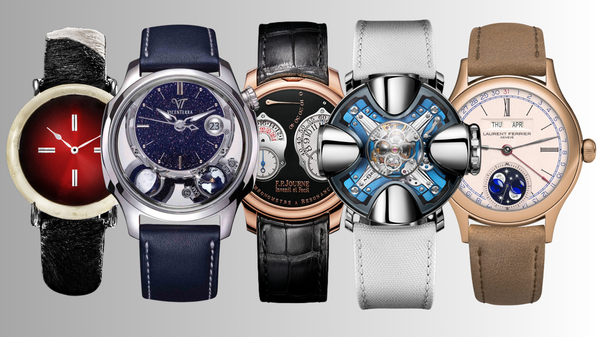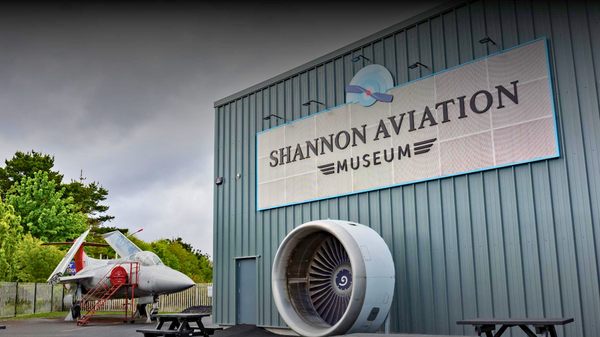Ireland's iconic painters and the art you’ll desire for your collection
Ireland has long been a fertile ground for artistic talent, producing painters with work you’ll desire for your collection.

Ireland has long been a fertile ground for artistic talent, producing painters whose work has captured the essence of the Irish spirit and its landscape. From the emotive expressionism of Jack Butler Yeats to the pioneering abstract compositions of Mainie Jellett, these artists have left an indelible mark on the art world. Here, we explore some of the most iconic painters in Ireland’s rich artistic history and where their works can be admired.
Jack Butler Yeats (1871–1957)
Style: Expressionism, Symbolism
Notable Works: The Liffey Swim, Grief
Where to See: Yeats’ works are prominently displayed at the National Gallery of Ireland in Dublin, which houses an extensive collection of his paintings. His works can also be seen at the Hugh Lane Gallery in Dublin and the Model Arts and Niland Gallery in Sligo, which has a dedicated Jack B. Yeats collection.

Jack Butler Yeats, the younger brother of the celebrated poet W.B. Yeats, is widely regarded as one of Ireland’s most significant artists. His work, deeply rooted in Irish culture and life, evolved from an illustrative style to one marked by symbolism and expressionism. Yeats often depicted scenes of Irish folklore, landscapes, and the human condition with a profound emotional depth that resonated with the nation's psyche. His later works, particularly, are known for their vibrant colours and expressive brushwork, capturing the complexity of Irish identity during a time of great change.
Sir John Lavery (1856–1941)
Style: Impressionism
Notable Works: The Bridge at Grez, The Artist's Studio
Where to See: Lavery’s paintings can be viewed at the Ulster Museum in Belfast, which holds a significant collection of his work. His portraits are also featured in the National Gallery of Ireland in Dublin and the Tate Britain in London.
Sir John Lavery was a leading portrait painter whose reputation extended far beyond Ireland. Born in Belfast, Lavery was trained in Glasgow and Paris, where he absorbed the influence of Impressionism. His portraits, which include prominent figures such as Winston Churchill, are celebrated for their elegance and psychological insight. Lavery’s contribution to modern Irish art was significant, not only through his portraits but also through his landscapes and genre scenes, which often depicted the everyday life of Irish people with a gentle, impressionistic touch.
Paul Henry (1876–1958)
Style: Post-Impressionism, Landscape
Notable Works: Launching the Currach, The Blue Hills
Where to See: Paul Henry’s works are well-represented in the National Gallery of Ireland in Dublin and the Ulster Museum in Belfast. His paintings can also be seen at the Hugh Lane Gallery in Dublin.

Paul Henry is synonymous with the rugged beauty of Ireland’s western landscapes. His paintings, characterised by soft, muted tones and a deep sense of tranquillity, capture the serene yet powerful presence of Ireland’s natural scenery. Henry’s work often portrays the countryside and its people timelessly, reflecting the enduring relationship between the Irish people and their land. His influence on the depiction of Irish landscapes in art is profound, and his paintings continue to be celebrated for their lyrical simplicity and emotional resonance.
Louis le Brocquy (1916–2012)
Style: Modernism, Cubism
Notable Works: A Family, Portrait of W.B. Yeats
Where to See: Le Brocquy’s works can be seen at the Irish Museum of Modern Art (IMMA) in Dublin, which has a significant collection of his paintings. The Hugh Lane Gallery and the National Gallery of Ireland also feature his work.
Louis le Brocquy is one of the most celebrated Irish painters of the 20th century, known for his unique and deeply personal style. His work often explores themes of identity, memory, and the human condition, with a particular focus on the portrayal of the human face and figure. Le Brocquy’s use of fragmented forms and his exploration of the psychological aspects of portraiture have made his work instantly recognisable. His contributions to modern art in Ireland are immense, and he remains a central figure in the country’s artistic heritage.
Mainie Jellett (1897–1944)
Style: Abstract Art, Cubism
Notable Works: Abstract Composition, Achill Horses
Where to See: Jellett’s works are displayed at the Hugh Lane Gallery and the National Gallery of Ireland in Dublin. The Crawford Art Gallery in Cork also features some of her paintings.

Mainie Jellett was a trailblazer in the introduction of abstract art to Ireland. Educated in Paris under the tutelage of renowned artists André Lhote and Albert Gleizes, Jellett brought the revolutionary ideas of Cubism to an Irish audience. Initially met with resistance, her work eventually gained recognition for its bold innovation and its role in modernising Irish art. Jellett’s abstract compositions, often infused with spiritual and symbolic meanings, marked a departure from traditional forms and paved the way for future generations of Irish artists.
Mary Swanzy (1882–1978)
Style: Cubism, Fauvism, Surrealism
Notable Works: Decorative Landscape, Girl in White
Where to See: Swanzy’s paintings are part of the collection at the Irish Museum of Modern Art (IMMA) in Dublin and the Hugh Lane Gallery. The Ulster Museum in Belfast also holds several of her works.
Mary Swanzy is remembered as one of Ireland’s most versatile and pioneering artists. Her work spans a range of styles, including Cubism, Fauvism, and Surrealism, each marked by a vibrant use of colour and imaginative composition. Despite her immense talent, Swanzy was somewhat overlooked during her lifetime, but today, she is celebrated as a key figure in modern Irish art. Her paintings, often dreamlike and richly coloured, reveal a unique vision that challenged conventional artistic norms and continues to inspire admiration.
The legacy of Ireland’s painters is a rich tapestry woven with diverse styles and profound expressions of the Irish experience. From the evocative landscapes of Paul Henry to the modernist explorations of Louis le Brocquy and Mainie Jellett, these artists have shaped not only Irish art but also the broader canvas of global artistic movements. Their works stand as testaments to the creativity and resilience of Irish culture, resonating across time and borders. Visitors to Ireland can explore these masterpieces in galleries and museums that house the nation’s artistic heritage, ensuring that the legacy of these iconic painters continues to inspire future generations.





